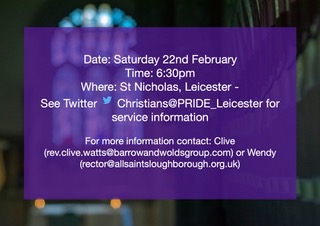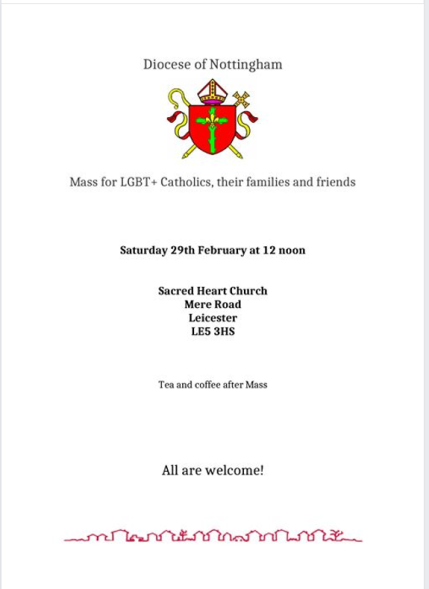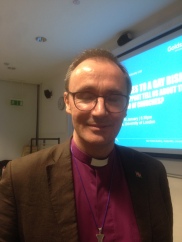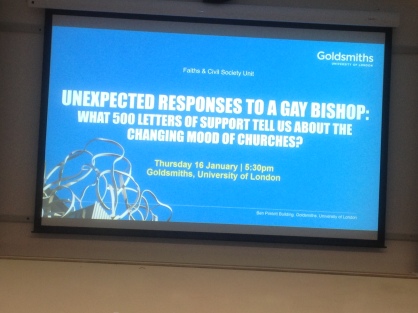On January 22nd 2020 the house of Bishops (HOB) published their pastoral statement Civil Partnerships – for same sex and opposite sex and opposite sex couples. A pastoral statement from the House of Bishops of the Church of England. This is available to download here.
In this document the HOB gave their decisions that opposite sex civil partnerships cannot be blessed in church and that anyone who applies for ordination in a civil partnership must be asked to explain why they have rejected the church’s doctrine of marriage. While I acknowledge the right of the HOB to make these decisions, the quality of the document setting out their reasoning is deeply flawed. It has factual errors, erroneous assumptions and significant omissions. It also produces a new definition of marriage!
In 2005 the House of Bishops issued a previous pastoral statement about civil partnerships. Available to download here.
It is interesting to compare the two documents because some sections of the two statements are copy and paste. I will discuss some of the content of this new statement.
Paragraph 3 incorrectly states that ‘…for the first time, [there is] a substantive gap emerged between the Church’s understanding of marriage and that of the State.’ In fact it is merely the latest in a list of differences in understanding. It has to be said that this difference in understanding incudes a difference in opinion about who controls marriage.
The church’s Canon B30 says: ‘The Church of England affirms, according to our Lord’s teaching, that marriage is in its nature a union permanent and lifelong, for better for worse, till death them do part, of one man with one woman, to the exclusion of all others on either side, for the procreation and nurture of children, for the hallowing and right direction of the natural instincts and affections, and for the mutual society, help and comfort which the one ought to have of the other, both in prosperity and adversity.”
Yet the state has allowed and regulated divorce since the 1857 Matrimonial Causes Act. The church of England stopped opposing this in 2002. It seems to me that a disagreement lasting 145 years and abandoning a key element of canon B30 would count as a substantive gap between church and state. And let’s not forget the 1836 Civil Marriage Act which allowed Catholics and non-conformists to marry in their own churches. Marriage could also take place in a civil registry office. This separated marriage from the exclusive remit of the churches.
In paragraph 7 the HOB redefines marriage, contrary to the official church Canons. The new HOB definition is
‘Marriage, defined as a faithful, committed, permanent and legally sanctioned relationship between a man and a woman making a public commitment to each other, is central to the stability and health of human society.’
The words making a public commitment to each other, have been added into the statement from paragraph 2 in the 2005 statement. This additional words are not found in any of the authoritative texts about marriage. These texts are usefully summarised here. Why does the HOB feel that they need to introduce a new element to their definition of marriage?
All definitions of marriage contain an explicit statement that marriage is permanent – no divorce is possible and remarriage after divorce has to be contrary to the requirement that it is lifelong. Yet the church routinely allows this in church.
Paragraphs 8 and 9 are copied, but in the intervening 15 years the church has made no attempt to define ‘sexual intercourse’ nor the sexual relationships that we should not be having neither has it addressed the vastly greater number of heterosexuals who are having sexual relationships outside marriage. If the church truly believed in this teaching then it would not ignore the significant number of couples who come to the church to get married and already have children together. How many of those couples get told that their relationship falls short of God’s purposes for human beings?
Paragraph 10 contains ‘In the context, however, of the introduction of opposite sex as well as same sex civil partnerships, the teaching of the church on marriage remains unchanged.’ This is almost an oxymoron, because the HOB both argues that marriage and civil partnerships are different things and argues that the theology of marriage applies to civil partnerships too. If Civil partnerships are different, then they should do the theology for them and do not just import ideas about marriage.
Why does the copied paragraph 14 (2005 para 11) have ‘nature’ underlined? It was not underlined in 2005. I also note the repeated use of the word legislation, it reads like something written by lawyers rather than theologians.
Then paragraph 16 has ‘The principles … therefore apply also to opposite sex civil partnerships.’ The wording implies that this is a conclusion drawn from an argument. However the preceding paragraphs have just basically said that people enter into civil partnerships for a variety of reasons and some of them may intend for the relationship to be sexually active. Everything in the preceding four paragraphs could apply equally well to opposite sex marriages, but nobody is suggesting that the principles for civil partnership should apply to them. As the reasoning applies to all, the principles from those should apply to all.
So we move to the heart of the matter in paragraphs 19 – 21, which basically say that because some people entering a civil partnership might not abide by the church’s teaching ‘that marriage between a man and a woman is the proper context for sexual intercourse’, then everyone entering a civil partnership is to be denied the opportunity for a blessing service. No attempt is made to allow for individual circumstances, some might agree with that teaching, so why should they be denied blessing?
In light of recent safeguarding events, such as the recent BBC2 documentary on the abuse by Bishop Peter Ball and the episcopal cover up, how can the HOB really say to couples entering a civil partnership that the clergy should talk to them about ‘sexual morality, celibacy, and the positive value of committed friendships in the Christian tradition?’ I’m afraid that the HOB has lost a lot of credibility recently and this unpastoral statement will just have accelerated that loss of credibility. Statements like this, from people in opposite sex marriages who deny to others the blessings that they enjoy, do not have the right to take the moral high ground until they deal with their own moral failings.
More copy and paste, then we get to new material in paragraph 26. It says ‘the arguments advanced in the Supreme Court included the desire for a publicly authorised institution which explicitly rejected the perceived religious connotations of marriage.’ Yet the HOB makes no attempt to understand the meaning of ‘religious connotations’ and miss the explicitly stated objections to patriarchy, privilege and power. When the successful campaigners Rebecca Steinfeld and Charles Keidan had their civil partnership on the first day, Tuesday December 31st 2019, the media reported that they had vows (The Times Wednesday January 1 2020 page 11). It also reported their reasons for choosing civil partnerships rather than marriage, which were based on equality and mutual respect as well as loving each other.
Therefore it is ironic that the HOB are wanting ‘candidates for ordination wishing to enter an Opposite Sex Civil Partnership should expect to be asked to explain their understanding of the theological and social meanings of their decision.’ Perhaps the candidate for ordination should enquire about the theological and social understanding of the person doing the enquiring. Or just explain it to the bishops anyway.
Comparing paragraph 29 with paragraph 23 in the 2005 statement, there is material that has been removed. The removed material states Issues in Human Sexuality made it clear that, while the same standards apply to all, the Church did not want to exclude from its fellowship those lay people of gay or lesbian orientation who, in conscience, were unable to accept that a life of sexual abstinence was required of them and instead chose to enter into a faithful, committed relationship. I would like to see this material reinserted into the document. This is an important point and needs to be explicitly stated.
Paragraph 32 states that ‘A key difference between a marriage and a civil partnership is that marriages are solemnised with vows and civil partnerships are not. Converting a marriage into a civil partnership thus implies the repudiation of a couple’s marriage vows.’ Speaking for myself, every civil partnership ceremony that I have been to has included vows. Everyone I know in a civil partnership had vows. Vows may not be mandatory and may not have legal weight, but couples want to make them. This is an argument that has no basis in pastoral practice. It can hardly count as a key difference. It sounds like someone is reading legislation and making assumptions, without checking the facts.
The idea that converting marriage into a civil partnership would imply repudiating the couple’s marriage vows is just contrary to the evidence. It might repudiate outdated patriarchy and male headship theology but it can be a way to affirm the marriage vows in equality and a loving relationship. The next paragraph compounds the pastoral insensitivity by requiring that if anyone wants to convert their marriage to a civil partnership ‘the implication that they are repudiating their marriage vows should be carefully pointed out to them.’ It would be interesting to know if the bishops ever considered that someone might disagree with them and feel that they were not repudiating their marriage vows.
However the real discrimination waits for the penultimate paragraph, 34. ‘In the case of clergy or ordinands who seek to convert a marriage into a civil partnership, it should be made clear to them that their decision involves the repudiation of their marriage vows and that the same discipline will apply to them as to those who have broken their marriage vows in other circumstances.’ Essentially because the HOB has got this unfounded idea that converting a marriage to a civil partnership is repudiating the marriage vows, they feel they can discipline those who do it. This shows a complete lack of understanding that there may be any point of view other than theirs. How can they speak to the motivation of everyone who might do this in the future? The truth is that they can’t. They are threatening to use their power against anyone who does not agree with their interpretations.
I would like to suggest an alternative scenario – where the HOB actually have a conversation (no more passive listening) and actually find out for themselves why some people prefer civil partnership over marriage. Some people want to make and keep vows, but do not want to be weighed down with centuries of outdated patriarchal headship theology.
And so this train wreck of a document ends with the new definition of marriage. ‘For Christians, marriage – that is the lifelong union between a man and a woman, contracted with the making of vows – remains the proper context for sexual activity.’ Somehow lifelong union seems to be restated and ignored and the idea that contracting with the making of vows makes the union a marriage.
‘In its approach to civil partnerships the Church seeks to uphold that standard, to affirm the value of committed, sexually abstinent friendships and to minister sensitively and pastorally to those Christians who conscientiously decide to order their lives differently.’
There is no sensitivity here, no quality pastoral care, just a restatement of privilege and power. Sorry Bishops, you have embarrassed yourselves here. If you want to decide that opposite sex civil partnerships cannot be blessed and that potential ordinands should explain their reasons for choosing civil partnerships, then you have the right to make that decision. Just make it a very short announcement, 2 sentences should do, and don’t try to redefine marriage while you are at it.
Sadly this is another church document that does not mention Jesus at all. It does mention the creation and that seems to be more important to HOB than Jesus.
For further reading ‘The changing nature of marriage’ page can be accessed here.
Anyone who wishes to contact their bishop can find publicly available contact information here.




